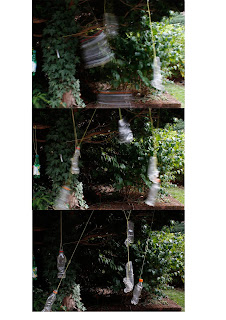What Is Shutter Speed?
The shutter speed on a camera is the length of time the shutter is open whilst shooting. The longer the shutter is open the more light the camera lets in (Moura). If you use a shutter speed lower than 1/60 it is best to use a tripod or some sort of stabiliser as when the shutter is open for a longer period of time more motion blur is capture in the shot. In film the shutter speed should be set at double the frame rate. The frame rate is the number of frames taken in each second. Usually in film the frame rate is set at around 25 frames per second therefore the shutter speed should be set at 1/50 of a second (35mmc). The shutter speed is set at double the frame rate as it helps capture natural movement better. If the shutter speed is too low you will get blurred movement, if you was to record with a high shutter speed everyone within your scene will look like robots, the motion will be very choppy therefore making it look like a stop motion (Devo).As you can see in these images I have shot an example of a slow shutter speed, a medium shutter speed and a fast shutter speed in order to show the motion blur captured. In the first image I shot with a shutter speed below 1/60 therefore, you can see a lot of motion blur, you may also notice that the shot is brighter as the shutter has been left open for longer. In the second image I have shot with a medium shutter speed of 1/125, there is less motion blur however you still cannot make out the moving object well. The image is slightly darker as the shutter has been letting light in for a shorter period of time. In the last shot I have used a shutter speed above 1/300 therefore the bottles seem still in the image. The photo is darker, when shooting I had to adjust my aperture and ISO accordingly to correctly expose the image.

Comments
Post a Comment